From July 27, 2022, the Innovation X series satellites have been orbitally operated normally for over one year. TYspace provides 7 star tracker and 2 sun sensor in orbit services for the space new technology test satellite, the “Low Orbit Quantum Key Distribution Experimental Satellite, and the Electromagnetic Assembly Test Twin Star.
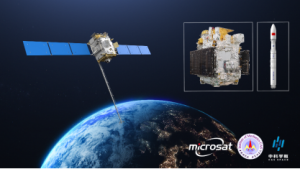
InnovationX and Lijian01, Satellite is about 650kg,and used TYspace NST4S-A2 star tracker
The first experimental star of the innovative X series, namely the space new technology experimental satellite, weighs about 650kg, and carries a scientific exploration payload, including the EP-WXT Pathfinder “Astronomical Lobster Eye Imager” instrument, the High Energy Burst Searcher (HEBS), the 46.5 nanometer Upper Solar Transition Zone Imager (SUTRI), and the CPT atomic magnetic field precision measurement instrument. In over one year orbital validating new technologies, these payloads have also achieved exciting scientific results.
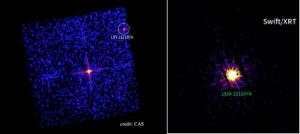
ray Transient Source Discovered by LEIA on satellite
TYspace NST4S-A2 star tracker serve for these satellites high-precision attitude determination. With a secondary baffle to enable a 25 ° sun suppression angle, the star tracker can operate well at 25 °sun light outside. The NST4S-A2 star tracker’s capture time for the entire sky area generally does not exceed 2 seconds, which can quickly provide attitude determination data for satellites in orbit. In the process of providing attitude data for the entire satellite in orbit, the time scale accuracy of TYspace NST4S-A2 star tracker is better than 0.1ms compared to synchronous pulses (SYNC signals). The lifespan of the NST4S-A2 star tracker is designed to operate in orbit at 1200KM for 7 years, with a reliability no less than 98% at the end of its lifespan. It can serve the satellite by its high performance and reliability to complete the space mission.
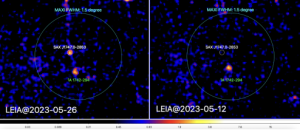
Neutron Binary Star Captured by LEIA at the Galactic Center
The “Low Orbit Quantum Key Distribution Experimental Satellite” weighs about 94kg and is a micro/nano satellite designed to complete the satellite to ground quantum key distribution business. It is also equipped with radiation source detection, super-computing platforms, space environment detection payloads, and uses non-toxic liquid ammonia propulsion for later orbit departure operations. The PST3S-H1 star tracker is served for “Low Orbit Quantum Key Distribution Experimental Satellite”. The PST3S-H1 star tracker has a small size and a power consumption of less than 1 watt. It has flexible installation methods and customizable sun suppression angles, making it suitable for various applications.
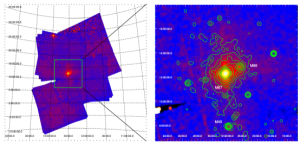
Composite-Image-of-Multiple Observations of the Virgo Region by LEIA
The “Electromagnetic Assembly Test Twin Star” weighs approximately 95kg and consists of two cubic satellites. The satellites are designed to conduct close range separation experiments of cubic satellites under electromagnetic force constraints in orbit, to verify the interaction law of electromagnetic forces between satellites and their coupling with satellite control forces, laying the foundation for the subsequent development of distributed reconfigurable technology and the verification of non-contact effects in space. A total of 6 TYspace products, including the PST3S-K4 star tracker and the SS-E1 sun sensor, serve for “Electromagnetic Assembly Test Twin Star”.
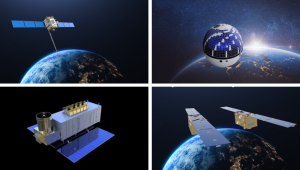
InnovationX five satellites
On July 27, 2023, which coincides with the first anniversary of the launch and operation of “Lijian-1” and “Chuangxin X” satellites, the Institute of Microsatellite Innovation of the Chinese Academy of Sciences and the China Science Aerospace Corporation jointly released the “Chuangxin X Science Flight” plan in Shanghai, collecting new loads and new products with on orbit verification requirements globally, and taking advantage of the launch opportunity of “Lijian-1” to carry four 50kg science micro satellite and two 100kg science micro satellites every year, One 600kg level scientific experimental satellite provides full chain carrying services for scientists, research institutions, universities, and space companies worldwide. As a leading enterprise in space industry in China, TYspace assist in the “Innovative X Science Flight” and provide high-quality, reliable products and services for various satellites. So far, TYspace has provided nearly 400+ products in orbit for different institutions, universities, and satellite manufacturers in over 10 countries worldwide.

